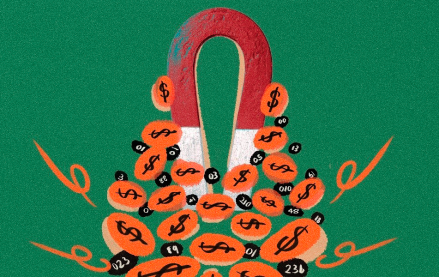
Sponsored by MNTN
Reaching the right audiences with relevant creative can make or break a campaign’s success, and TV advertising hasn’t always been well-equipped to meet this challenge. For example, linear TV advertising has long been constrained by the need to provide mass appeal, leaving personalization out of the picture and impacting relevance.
“With linear TV advertising, part of the challenge from a creative standpoint is that you need to make sure that the ad is general enough to satisfy all of the potential viewers of the ad,” said Ali Haeri, vice president of marketing at MNTN.
The landscape is changing. CTV advertising has emerged as a crucial channel for relevance, bringing with it a targeting advantage, drawing on a plethora of audience and outcome data. This data has become a launchpad for creativity.
“With connected television, you’re targeting by audience,” Haeri said, “and the audience can be quite precise. That can introduce the opportunity for some really interesting creative based off of the targeting.”
However, with engaging creative comes a new imperative: CTV ads must remain dynamic and fresh over time, and they must be highly relevant to viewers to have the most impact. Creative refresh — a data-leveraging process that informs the creation of multiple variations of a CTV ad unit to target different audiences — allows marketers to exercise their innovation in a metric-informed and iterative way. Utilizing creative refresh is a powerful tactical approach toward reaching the right audiences and keeping them engaged.
Using creative refresh to optimize outcomes
Creative refresh is a data-driven feedback loop, and audience data acts as the starting point of the process. Using this data, marketing teams can create different versions of an ad according to viewers’ demographics, interests or stage of the customer journey with a brand.
“We’ve seen some advertisers shoot largely the same creative but leave about 5% of it to be altered based on the different audiences that they’re targeting,” explained Haeri. “Maybe it’s just the change of a single line in the advertisement that makes more sense in a certain geography or to a certain target audience. So they just slightly shift that creative around, depending on who’s actually seeing that ad.”
The different versions of an ad are then delivered to viewers, and then the performance results come into play. As Haeri explained, “If you have core variations to the same creative, you can just run the ads and see which one yields the better site visit rate or actual conversion performance.”
Armed with that performance data, teams can iterate their approach to the creative by refreshing aspects of it to better connect with their target audiences. From there, the cycle of creative refresh continues as marketers leverage their past learnings to make creative decisions that have the most impact.
This iterative, customizable process allows marketers to flex their creativity with CTV advertising in a way that is impossible with the constraints of maintaining traditional, linear TV’s mandate for mass appeal in one attempt. “With the personalization capabilities, what’s great is that advertisers are kind of freed up in a way,” said Haeri. “You don’t need to put all your eggs in that one basket of that one creative running on that one placement.”
Creative refresh is a practice and tactical approach
In a marketplace where serving the right content to the right audience is crucial to driving performance outcomes, creative refresh is a critical tactical opportunity for marketers when engaging with CTV.
However, the fact that CTV is a performance marketing platform doesn’t mean that creative, clever advertising should go by the wayside. The classic concept of the TV commercial that captures something of the moment that’s culturally resonant is as much a goal for CTV advertisers as their linear counterparts. As Haeri explained, “You don’t need to uproot your creative process. If anything, your creative process is going to get a little bit more exciting with these new capabilities.”
The key, Haeri noted, is to keep the iterative process of creative refresh central to the planning process, making it part of the program and not a replacement for smart, funny, poignant or meaningful ads.
“What’s important is you need to go into the creative process knowing that you have this creative flexibility,” he said. “It’s kind of hard once you’ve already shot something, gone through the trouble of a shoot day and editing, and only then do you have a bright idea like this.”
As CTV continues to come into its own as a performance marketing channel, the marketers that will get the most bang for their buck are those that understand the channel and its unique opportunities, like creative refresh. “It’s important to educate yourself on platform capabilities going into the creative process so you can make plans around having that level of flexibility around personalization,” said Haeri. “Then the results can be tremendous.”
Sponsored By: MNTN
More from Digiday
Sliders test article
Amazon bulldozes into new markets, upending the status quo and challenging rivals. Today, it’s the turn of the ad-supported streaming world, and Amazon is coming out of the gate strong. Why, you ask? Because Amazon is serving marketers an opportunity beginning today to reach a whopping 115 million monthly viewers in the U.S. alone, courtesy […]

How CTV and DOOH are growing this political season for smaller agencies
Connected TV and digital out-of-home are playing a bigger role in upcoming elections and politics – especially for smaller agencies looking to place clients’ dollars.

CMO Strategies: Advertisers identify the top attributes on ad-supported streaming platforms
This is the third installment in Digiday’s multi-part series covering the top ad-supported streaming services and part of Digiday’s CMO Strategies series. In this report, we examine which ad attributes matter the most to marketers on streaming platforms.
Ad position: web_bfu